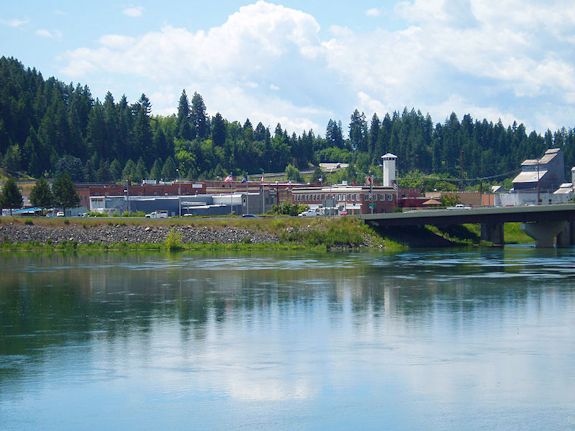The Kootenai Tribe of Idaho is a federally recognized tribe indigenous to the Northwest Plateau.
Official Tribal Name: Kootenai Tribe of Idaho
Address: PO Box 1269, Bonners Ferry, ID 83805
Phone: 208-267-3519
Fax: 208-267-2960
Email:
Official Website: www.kootenai.org
Recognition Status: Federally Recognized
Traditional Name / Traditional Meaning:
Common Name / Meaning of Common Name:
The Kootenai Tribe of Idaho is named after the Kootenay (Canadian spelling) or Kootenai (U.S. spelling) River, a major river in southeastern British Columbia, Canada and the northern part of the U.S. states of Montana and Idaho.
Alternate names / Alternate spellings / Mispellings: The Kootenai River used to be called the Flatbow. Alternate spelling:Kutenai
Name in other languages:
Region: Plateau
State Today: Idaho
Traditional Territory:
The Kootenai people lived along the Kootenai River in Idaho, Montana, and British Columbia.
Confederacy: Salish
Treaties:
Source: US Government via Wiki Media Commons
Town of Bonners Ferry along the Kootenai River
Reservation: Kootenai Reservation and Off-Reservation Trust Land
The Kootenai Reservation was first established in 1896. After subsequent land loss, the reservation was re-established in 1974.
Land Area: 3,985-acres
Tribal Headquarters: Bonners Ferry, Idaho
Time Zone: Pacific
Tribal Flag:
Chief Three Moons, a former chief and legendary leader of the people, is represented by the drawing of three moons.
The tribe has status as a non-treaty nation, depicted by the empty arrow quiver, an unsigned treaty and another shield to show perpetuity.
Tribal Emblem:
The nation’s ongoing relationship with the State of Idaho is shown by the state map wrapped in a red ribbon with Kootenai Tribe of Idaho inscribed on the ribbon.
The seven bands of the Kootenai Nation are represented by seven feathers. They depict the Kootenai Tribe of Idaho, the Lower Kootenai Band in Creston, B.C., the St. Mary’s Band in Cranbrook, B.C., the Columbia Lake Band in Windermere, B.C., the Sushwap Band in Invermere, B.C., the Tobacco Plains Band in Grasmere, B.C. and the Confederated Salish and Kootenai Tribe in Elmo, Montana.
Population at Contact:
Registered Population Today: 67 in 1974.
Tribal Enrollment Requirements:
Genealogy Resources:
Government:
Charter:
Name of Governing Body: Kootenai Tribal Council
Number of Council members: Three general Tribal Council members, two alternate Tribal Council members plus the executive officers
Dates of Constitutional amendments:
Number of Executive Officers: Chairman, Vice-Chairman, Secretary and Treasurer
Elections:
The Kootenai Tribe of Idaho is divided into three districts based on family groups. Members of the Kootenai Tribal Council are selected from the districts from which they are members. Elected officials serve a four-year term.
Language Classification: Kutenai
The Kutenai language is a language isolate, meaning it isn’t related to any other languages.
Language Dialects:
Number of fluent Speakers:
Dictionary:
Origins:
Bands, Gens, and Clans
Related Tribes:
Other Kootenai people, Flatheads, Kalispel people.
Confederated Salish and Kootenai Tribes of the Flathead Nation
Traditional Allies:
Traditional Enemies:
Warfare for the southern Coast Salish was primarily defensive, with occasional raiding into territory where there were no relatives.
The common enemies of all the Coast Salish for most of the first half of the 19th century were the Lekwiltok aka Southern Kwakiutl, commonly known in historical writings as the Euclataws or Yucultas.
Regular raids by northern tribes, particularly an alliance between the Haida, Tongass, and one group of Tsimshian, are also notable. With earlier access to European guns through the fur trade, they raided for slaves and loot. Their victims organized retaliatory raids several times, attacking the Lekwiltok.
Ceremonies / Dances:
Sun Dance
Modern Day Events & Tourism:
Legends / Oral Stories:
Art & Crafts:
Animals:
Clothing:
Housing:
Winter villages had cone-shaped houses made from wooden poles and rush mats.
Subsistance:
The Kootenai people were hunter-gatherers who relied heavily on the salmon runs. They also harvested many kinds of berries and roots. Camas roots, which can be prepared like a potato or ground into a flour, were important foods.
Economy Today:
Reservation industries include timber, tourism, and selling sand and gravel. The tribe also owns a sturgeon hatchery.
The Kootenai Tribe built the Kootenai River Inn in Bonners Ferry, Idaho in 1986. It is now the Kootenai River Inn Casino and Spa, and also has the Springs Restaurant, Casino Deli, the Kootenai Day Spa, and a gift shop.
Religion & Spiritual Beliefs:
Quilxka Nupika, the supreme being or Creator God
Burial Customs:
Wedding Customs
Radio:
Newspapers:
Famous Kootenai Chiefs and Leaders:
Catastrophic Events:
Tribe History:
In 1855 the tribe refused to sign a treaty with the US government that would require them to cede their aboriginal lands in Idaho and consolidate with several other smaller tribes in Montana. The Dawes Act broke up tribal land holdings into individual allotments.
Due to illegal land loss, the tribe was awarded $425,000 in a land claims settlement in 1960.
On 20 September 1974, the members of the Kootenai Tribe formally declared war on the United States seeking federal recognition. They did not engage in violence, and, by calling attention to their situation, the tribe was deeded 12.5 acres
In the News:
Further Reading:

